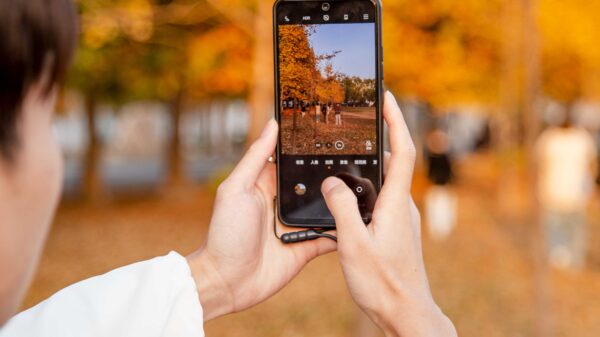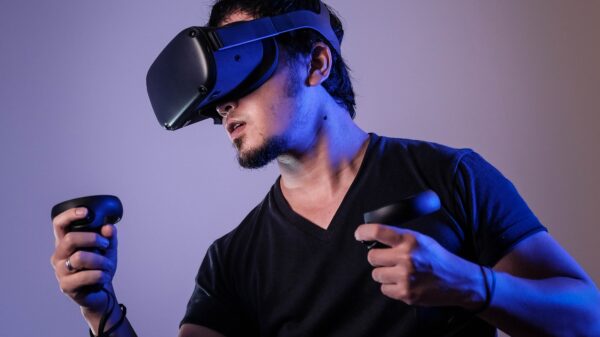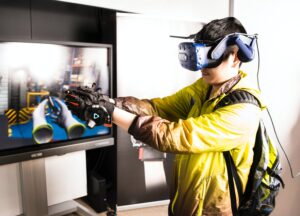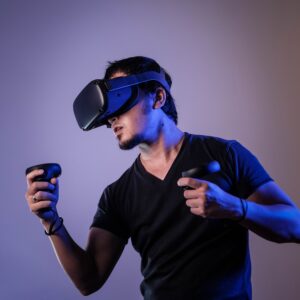
Welcome to the future! Augmented reality (AR) has burst onto the scene, revolutionizing the way we interact with technology and transforming various industries. From gaming to healthcare, education to retail, AR is a game-changer that promises incredible possibilities. In this blog post, we will take you on a thrilling journey into the four major applications of augmented reality that are reshaping our world as we know it. Get ready to be amazed by how AR is enhancing entertainment experiences, improving medical treatments, revolutionizing learning environments, and redefining customer experiences in retail. So fasten your seatbelts and get ready for an adventure like no other as we dive deep into the transformative power of augmented reality across these industries!
Introduction to Applications of Augmented Reality
Augmented reality (AR) is a technology that overlays computer-generated images on the real world, in real time. It has been around for decades, but only recently has it become mainstream, thanks to advances in mobile computing and increased public awareness.
There are four major applications of augmented reality: gaming, retail, healthcare, and education.
1) Gaming: AR games are becoming increasingly popular. In 2016, Pokémon GO became an overnight sensation, with players using their smartphones to “catch” virtual creatures in the real world. Other popular AR games include Ingress and Zombies, Run!
2) Retail: Online retailers are now using AR to give customers a more immersive shopping experience. IKEA’s Place app lets shoppers see how furniture would look in their homes before they buy it. Amazon’s AR View allows customers to view products in 3D before making a purchase.
3) Healthcare: AR is being used in healthcare to provide patients with better information and treatment options. For example, the app Anatomy 4D allows users to see human anatomy in 3D. The app can be used by medical students to learn about anatomy or by patients to better understand their own bodies.
4) Education: AR is being used in education to create more engaging and interactive learning experiences. The app Socratic allows students to point their phone at a math problem and get step-by-step solutions. The app also provides video
What are the Four Major Applications of Augmented Reality?
1. Advertising and Marketing
AR can be used to create interactive experiences that engage customers and promote products or services. For example, Coca-Cola used AR to let people virtually try on coke-branded sunglasses.
2. Architecture and Construction
AR can be used for construction planning, design, and visualization. It can also be used by architects and engineers to view 3D models of buildings and other structures. For example, Trimble’s Mixed Reality Viewer lets users view mixed reality content created with the company’s SketchUp software.
3. Education and Training
AR can be used for educational purposes such as learning anatomy or exploring historical sites. It can also be used for training simulations, such as those used by the military or medical professionals. For example, the US Army uses AR to train soldiers on how to operate vehicles and use weapons.
4. Entertainment and Gaming

AR can be used for entertainment purposes such as gaming, movies, and concerts. It can also be used to create interactive experiences at tourist attractions. For example, Pokemon Go is an AR game that allows players to catch virtual Pokemon in the real world.
— Augmented Reality in Retail
In the retail industry, AR can be used in a number of ways to enhance the shopping experience for customers. For example, AR can be used to provide product information and recommendations, as well as directions and location information within a store. Additionally, AR can be used to create an interactive and immersive shopping experience that engages customers and encourages them to make purchases.
Some of the most popular applications of AR in retail include:
1. Product Information and Recommendations: Customers can use their smartphone or tablet to view product information and recommendations in real-time while they are in a store. This includes information such as prices, reviews, sizing charts, etc.
2. Directions and Location Information: Customers can use AR to get turn-by-turn directions and location information within a store. This helps them find specific products they are looking for quickly and easily.
3. Interactive Shopping Experiences: Stores can use AR to create interactive shopping experiences that engage customers and encourage them to make purchases. For example, customers can try on virtual clothes without having to actually try them on physically, or they can view how furniture would look like in their home before buying it.
4. Customized Shopping Experiences: Stores can also use AR to offer customized shopping experiences for customers based on their preferences and past purchase history. This could include things like personalized coupons or deals, recommendations for similar products, etc.
— Augmented Reality in Healthcare
Augmented reality (AR) is a live direct or indirect view of a physical, real-world environment whose elements are “augmented” by computer-generated sensory input, such as sound, video, graphics or GPS data. It is related to a more general concept called mediated reality, in which a user’s perception of reality is modified by a computer. As a result, it can be difficult to draw a clear distinction between the two.
AR is widely used in healthcare for various purposes such as doctor-patient communication, training and education of medical students and professionals, remote diagnosis and treatment, and patient engagement. Some of the most popular AR applications in healthcare include Google Glass, HoloLens, Vuforia, and DAQRI Smart Glasses.
Google Glass is perhaps the most well-known AR application in healthcare. It is a wearable computer with an optical head-mounted display (OHMD) that resembles a pair of eyeglasses. Google Glass has been used for various purposes such as telemedicine, surgical training and education, patient monitoring, and even remote surgery.
HoloLens is another popular AR application developed by Microsoft. It is a headset that allows users to see and interact with holograms in their environment. HoloLens has been used for medical training and education as well as for remote diagnosis and treatment.
Vuforia is an AR development platform that enables developers to create AR applications for mobile devices. Vuforia
— Augmented Reality in Education
It’s no secret that education is one of the most important aspects of our lives. It helps us grow and develop as individuals, and allows us to contribute to society in a positive way. However, the traditional education system has its limitations. That’s where augmented reality comes in.
Augmented reality can be used in a number of different ways to enhance the educational experience. For example, it can be used to create interactive 3D models of complex concepts, which can help students understand them more easily. Additionally, AR can be used for virtual field trips, which can give students first-hand experience of locations and events they might not otherwise have access to.
There are endless possibilities for how augmented reality can be used in education. The only limit is our imagination. With AR technology becoming more and more accessible, there’s no doubt that it will become a game-changer in the education sector.
— Augmented Reality in Industrial Use
Augmented reality (AR) is widely known for its gaming and entertainment applications. However, it is also increasingly being used in industrial settings to enhance worker productivity and safety. Here are four major ways AR is being used in industry:
1. Training and simulation: AR can be used to provide realistic training simulations for workers, without the need for expensive physical equipment or facilities. This can be particularly useful for dangerous or difficult-to-replicate work environments.
2. Maintenance and repair: AR can be used to provide instructions and guidance to workers performing maintenance or repair tasks. This can help reduce downtime and increase accuracy.
3. Quality control: AR can be used to inspect products for defects or deviations from specifications. This can help ensure quality standards are met and improve efficiency.
4. Safety: AR can be used to provide real-time alerts and information to workers about potential hazards in their environment. This can help prevent accidents and improve safety overall.
Benefits of Using AR in Various Industries
There are many benefits of using AR in various industries. Here are four major applications of AR that are game-changers in various industries:
1. Retail and E-commerce Industry
AR can be used in retail and e-commerce industry to provide a better shopping experience to customers. For example, IKEA has developed an app called IKEA Place that allows users to virtually place furniture in their homes to see how it looks before making a purchase. This is a great way for customers to visualize the products and make informed decisions.
2. Healthcare Industry
AR can be used in healthcare industry to provide better patient care and training for doctors and nurses. For example, medical students can use AR to learn about human anatomy. Doctors can also use AR to view patient data in real time, such as X-rays or MRIs, which can help them make more accurate diagnoses.
3. Manufacturing Industry
AR can be used in manufacturing industry to improve quality control and assembly line processes. For example, workers can use AR headsets to view instructions or 3D models of products they are assembling. This can help them assemble products more quickly and accurately.
4. Education Industry
AR can be used in education industry to create interactive learning experiences for students. For example, history students can use AR to view virtual recreations of historical events or locations. Science students can use AR to view 3D models of molecules or other objects that are difficult
Challenges of Implementing AR Tech
Despite all of the potential benefits that augmented reality (AR) technology can bring to various industries, there are still a number of challenges that need to be addressed in order to make it a more viable option for businesses. Below are some of the key challenges that need to be addressed:
1. Limited AR hardware options: There are currently only a handful of AR-enabled devices on the market, which limits the potential reach of any AR application. In addition, many of these devices are still quite expensive, which further limits their appeal.
2. Lack of standardization: There is currently no industry-wide standard for how AR applications should be developed or deployed, which makes it difficult for businesses to invest in the technology.
3. Fragmented market: The AR market is currently quite fragmented, with a large number of small companies all vying for a piece of the pie. This fragmentation makes it difficult for businesses to know who to trust and makes it more challenging to find quality AR applications.
4. Privacy and security concerns: Given the interactive and immersive nature of AR applications, there are legitimate concerns about privacy and security when using these applications. These concerns need to be addressed in order for businesses to feel comfortable investing in and using AR technology.
Conclusion
Augmented reality has been a game-changer in various industries, providing new and innovative ways to interact with the world around us. As technology continues to progress, the applications of augmented reality will continue to expand. From entertainment and education to industry and medicine, AR has shown incredible potential for transforming how we interact with our environment. With so much potential ahead of us, it is exciting to think about what possibilities lie in store for this powerful and revolutionary technology.







